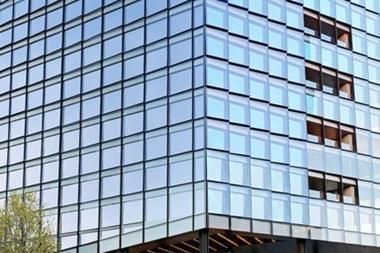Property Week hosted a Yardi digital think tank exploring what impact Covid-19 will have on the flexible workspace sector and how office design and occupier requirements are likely to change in the aftermath of the pandemic.
Panel of experts
- Tony Freeth, director coworking, Yardi Systems
- Andrew Mercer, office sector lead, Legal & General Investment Management
- Sanjaya Ranasinghe, technical director, WiredScore
- Lucy Watts, senior director, strategic projects, Instant Offices
- Alison Webb, head of Workplace futures, development, Lendlease
- Simon Creasey, contributing editor, Property Week (chair)

Are recent headlines such as ‘this is the end of the office as we know it’ and ‘offices will never be the same after Covid-19’ hyperbolic or will we see genuine change in terms of office design and the way we use offices in the months and years ahead?
Mercer: There are a lot of unknowns at the moment. The one thing that is certain is that we will have to make changes, both in terms of the way offices are designed and the way they are used. It is going to be an interesting time, but I do not think it will be the end of offices. Everyone has got used to working from home. There will be people who will want to continue working from home and I imagine there will be businesses that will encourage them to do that, but there will also be people who want to go back to the office. So I do not see it as the end of the office – far from it.
“I do not see it as the end of the office – far from it”
Andrew Mercer
Webb: We are so early on in this journey that it is tricky to put your finger on exactly what will change. We have been trying to look at it as short term versus longer term. I think that in the shorter term, particularly while the threat of transmission of the virus is front of mind, there could be some drastic changes in terms of how we set up our spaces and how we operate. In the longer term, it will be interesting to see what emerges in terms of preferences, behaviours and organisational needs as a result of the bigger structural changes taking place.
Ranasinghe: Someone described this as ‘the biggest working from home experiment that has ever happened’, but it is actually the biggest change management experiment that has ever happened. The rate at which businesses have had to change over the last month compared to what they have been willing to do in the past is phenomenal. As office space once again becomes a viable location, landlords and developers need to consider how the heightened appetite for change can be used to meet tenant requirements because it will be a competition to meet them as people return to work.
Watts: One of the things that will change is de-densification in the flexible workspace sector. If you go back five or six years, the average allocation per desk in the flex market was about 75 sq ft per person. In the last five years, with newer operators coming into the market with a very different style of product, that has really shifted, with some operators offering a 30 sq ft to 40 sq ft allocation per person. In the long term, I do not think we will see those really high-density office spaces because clients will not be happy with that kind of risk moving forward.
![]()
Freeth: I think you need to take a two-year perspective on this because there may initially be an over-reaction. So whatever happens in the next six months is probably not where we will be in two years.
Take-up of flexible workspace surged following the recession and a growing number of operators have since launched products alongside larger agency groups and landlords that have introduced their own branded offers. Many people argue that the flexible workspace model is recession-proof, but there had been consolidation in the sector before the pandemic with a number of operators struggling. Can the flexible workspace sector ride out this storm?
Mercer: Yes, there will be further consolidation and some operators will struggle financially, but some are being really smart in their approach. They are looking after their occupiers and passing on any savings they can make operationally. We are going into a difficult economic environment and one where the serviced office sector thrived last time around, in 2009-2010. I have no doubt there will be opportunities with businesses looking for shorter leases and swing space. New start-ups will also come along and create demand.
Webb: The models that different flexible workspace operators run will be tested and it is something we need to work on collaboratively to make it work. In terms of the customer demand that is coming out in this period of uncertainty, we will continue to see the trend we have already seen from occupiers that have a growing desire for more flexibility and different forms of lease structures.
”The models that different flexible workspace operators run will be tested”
Alison Webb
Watts: One of the models that is being talked about the most at the moment is coworking. I think the immediate short-term impact on coworking is going to be significant because the month-to-month memberships are the easiest to cancel and during this period there is no need to carry on paying for something that you cannot access. We know that anyone offering a pure coworking model has seen revenues significantly drop off and that is the same for operators that also generate quite a high revenue income from hiring out event and meeting space. I think that in those two areas in the short term it will be really painful and some operators will be unable to make it through the period because too much revenue is based on that short-term income.

Freeth: There are two trends occurring at the moment that I find quite fascinating. One is around how many coworking providers are rapidly going back to the office and putting partitions back in and just generally being more flexible with the space and placing less emphasis on the conceptual-led fitout that may have been there beforehand. The other thing I am struck by is the number of operators talking about complete building servicing, or floor level servicing, and enhancing the technology offer by providing complete drop-in space where occupiers can bring along their digital worktops and Zoom accounts or whatever and the occupier has absolutely nothing at all to do with the servicing of that whole space. Large companies that formerly ran their own buildings may now want to contract fully serviced buildings and may reach out to flexspace operators to provide them.
How can landlords and flexible workspace operators ensure they are well placed to capitalise when the lockdown ends and people start returning to the workplace?

Mercer: For both flexible workspace landlords and traditional landlords, the relationship with occupiers will be key. It will also be about choice and who can provide the right choice to address the issues of individual occupiers. That may be flexible working, or for traditional landlords it might be about fitting out more spaces such as furnished and work-ready spaces, to reduce the capital intensity occupiers need to put into leasing. We might also see more core and flex space, with a core office and then either a hub out-of-town or some more space in the same building but on a shorter term. None of this is new – it has been talked about for a number of years – but I think this period will intensify those discussions.
Watts: On that point around choice there are a number of operators that have succeeded – and I think we will see them continue to succeed – that operate a multi-brand strategy, or have different solutions within their portfolio to meet different client needs. IWG obviously has a broad range of brands to meet client’s needs and then there are newer players out there such as Newable that has NewFlex, Serendipity Labs, Citibase, easyHub and Bold as their solutions. The landlords are doing a similar thing as well offering headquarter solutions and managed solutions for operators that need a bit more flexibility. They are also offering flex solutions where they provide small office suites. So I think we will see choice as really key.
Technology has played an integral role during lockdown. When the restrictions end, will we see technology play an even greater role in the workplace for both in-building connectivity and connecting people working remotely to people in the office?
Freeth: One of the things that has been happening in the background is what is called digital transformations – or digital desktops – where people have a portable working environment that allows them to work in the office from home or even in another place. The greater use of video, which has been kicking around in the background for 30 years or so, presents a challenge, particularly in multi-occupied spaces, because you may have 10 times as many people communicating through video links than before. Building infrastructure needs to be managed and serviced. I think occupiers will increasingly rely on operators to provide that because companies do not want to run an IT project that will last for two years and produce something in 2022 that solves a 2020 problem.
Ranasinghe: Office buildings are more like mini data centres for their tenants now. There are major corporates that are not fully cloud-based, so they still have a server in their office or somewhere in their headquarters. However, now they have a lot of users working from home trying to access that server and their business continuity plans did not consider this. So this idea that buildings have become data centres for tenants places the emphasis on landlords preparing the space in their buildings to accommodate that not only from a power perspective but also from a connectivity perspective to allow tenants to really have confidence that their users can access the data from the business wherever they are.

Another interesting thing to consider is that we are all now relying on home internet connection to work and that will probably be a risk that businesses will not want to accommodate in the future. There are two ways to fix this. One is that tenants need to think about how they can offer their work internet connection to their users at home and the second option is mobile. Digital desktops should be mobile connected so people are not reliant on the quality of their Wi-Fi signal. This means that when they move back into the office space and are at their desk or in the community space, they should have a choice between connecting via Wi-Fi or connecting via their corporate mobile contract. In that latter case, what we are seeing is the need for large office buildings to have better mobile capabilities, which is something that is truly lacking today.






























No comments yet